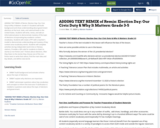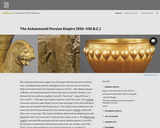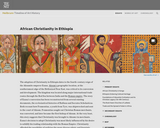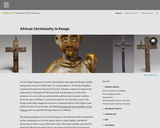
This parent guide supports parents in helping their child at home with the 7th grade Social Studies content.
- Subject:
- Social Studies
- Material Type:
- Reference Material
- Vocabulary
- Author:
- Kelly Rawlston
- Letoria Lewis
- Date Added:
- 10/12/2022

This parent guide supports parents in helping their child at home with the 7th grade Social Studies content.

This is the PowerPoint and lesson plan associated with the lesson 8 Tribes, 1 State.

This parent guide supports parents in helping their child at home with the 8th grade Social Studies content.

In this activity students identify the different relationships that can be found in a community and create a class Community ABC Book.

In this lesson, students identify the steps for success in saving, give examples of how saving for the future means giving up things today, and set a savings goal and develop a plan to reach it.

ADDING TEXT REMIX of Remix: Election Day: Our Civic Duty & Why It Matters: Grade 3-5
Students will build background and show understanding about government elections at the local, state, and national levels in the United States.
Students will write, revise, and edit an informational piece to demonstrate mastery of the topic of elections incorporating key academic content vocabulary.
Students will create a PPT with a teacher's model to demonstrate understanding and mastery of key content area vocabulary words.
Students will complete activities during independent work time or literacy stations. Provides a QR code for students to listen to stories (2 non-fiction and 1 fiction) about elections. After they listen to the stories they choose one of the non-fiction texts to write facts about, find the main idea and key details, and define new words

Students will consider the choices artists make when creating works of art that include people. They will consider style, medium, background, color, technique, and composition; compare images of women as represented by different artists; learn about where artists get their sources and inspiration.

Students will consider the ways that artists respond to political and social events and ideas; think about sources of inspiration; learn about symbols and think about what they represent.

Students will consider the choices artists make with regard to painting, focusing on color, shape, composition, proportion, balance, style, and scale; learn how to discuss and compare nonrepresentational works of art; think about their relationship as a viewer to works of art and will consider how an abstract work can evoke a sense of atmosphere or place.

Students will consider the choices artists make with regard to painting. They will focus on line, material, scale, and the artistic process; learn how to discuss, compare, and think critically about nonrepresentational, or abstract, paintings; think about the use of line in painting.

Students will consider how and why artists use everyday objects as subject matter; consider the choices artists make when creating works of art, exploring subject matter and sources of inspiration, medium, and style; make connections between consumer culture and art; learn about the technique of screen-printing.

This article explains the development and legacy of the Achaemenid Persian Empire.

Students will explore the various ways they can ensure their voices are heard regarding issues they care about. To help students appreciate their own value, intelligence, and potential as political actors (Anyon, 2005, p. 179) students will role play different ways of taking political action and reflect on ways to more effectively lobby for change.

In this resource, students learn to review primary sources about African Americans in aviation during the 1940s. They use their primary source study to answer two research questions: What obstacles to full participation in aviation did African Americans face? What strategies did they use to overcome these obstacles?

Students will learn about the roles of African Americans in Congress during Reconstruction. Through their participation in class discussion and the review of primary sources, students will explore the political climate and changes that took place during Reconstruction. Students will focus on the legislation that restricted and advanced the rights of African Americans throughout this period, examining how African American men were able to gain representation in Congress. Through creation of and participation in a group teaching activity, students will focus on the important roles these African American legislators filled. Access the PowerPoint to accompany this lesson here: https://database.civics.unc.edu/files/2012/10/AfAmUSCongressReconstructionPPT.pdf

This article explains how Christianity was adopted in Ethiopia in the fourth century. It also explains how Askum's geographic location played an important role in the development and spread of Christianity in this region.

This article examines the spread of Christianity in Kongo. It explains why the Kongolese adopted the religion and its impact.

Students will learn about Princeville, NC, the oldest town in the United States incorporated entirely by African Americans. Students will learn about the challenges that faced newly freed slaves.

Students will learn about North Carolina's little known eugenics program, as well as explore the constitutionality of state mandated sterilization by reviewing the NC Supreme Court case, In re Moore. Stidents will culminate this lesson by making recommendations on how the state should make amends for the program's past controversial actions, as well as examine actual consolation recoomendations recently made by the North Carolina's General Assembly.

Students will explore the Age of Enlightenment through a Power Point presentation and class discussion. Students will then further explore this period of history and its prominent figures by designing a dinner party for 12 Enlightenment thinkers. This project will encourage students to learn more about the period and the philosophers associated with it, as well as synthesize what they have learned while utilizing higher order thinking, group work skills, and creativity.